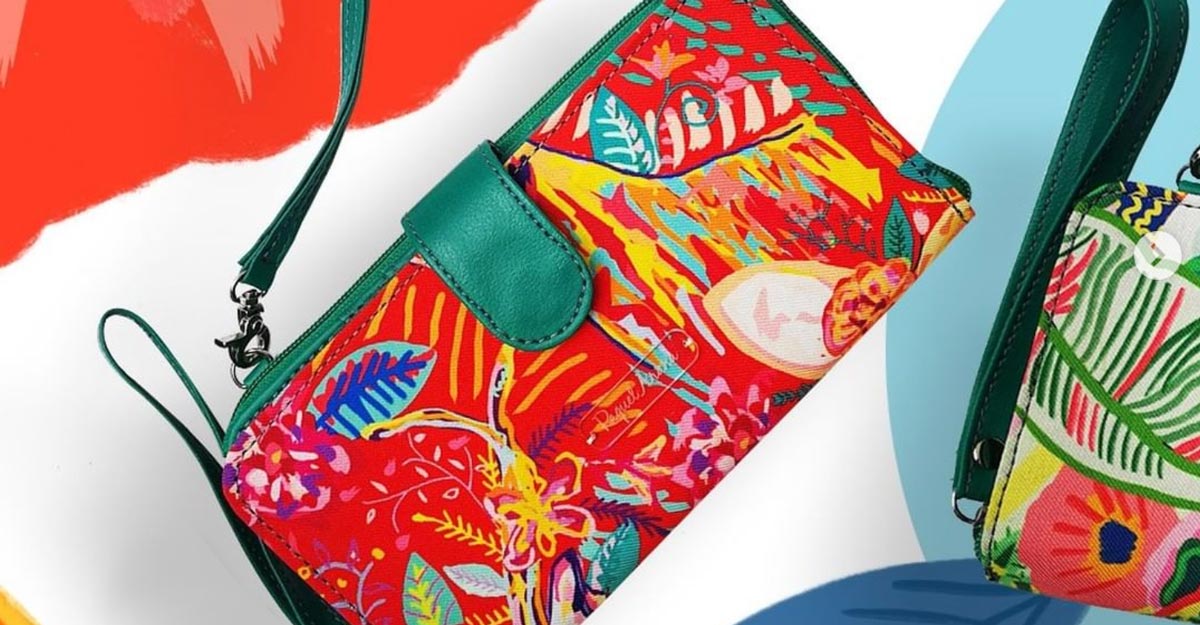By Anca Ciurel, Fellow in the Copyright and Creative Industries Sector, WIPO
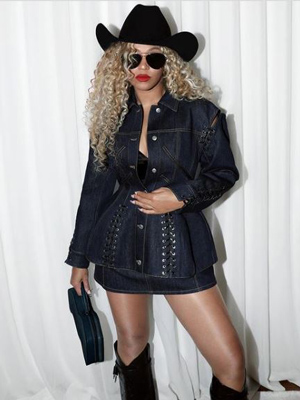
by Marc Ozias. (Photo: @Beyonce )
Handbags are iconic, designed to distinguish the owner as much as the maker. They carry the most powerful names in fashion and complete the look of superstars like Beyoncé. Their trending appeal also makes them prone to being copied – but that doesn’t mean knockoffs are acceptable.
Established brands, from Hermès to Chanel to Louis Vuitton, utilize a range of intellectual property (IP) rights to ensure their items’ reputation endures. But handbags are also a way for new designers to make an instant name for themselves.
Take Marc Ozias, when his Jolene handbag hit the headlines this spring. It’s an homage to Beyoncé’s cover of Dolly Parton’s famous song on her new album, Cowboy Carter. The superstar posted a picture of herself carrying the Jolene bag on her Instagram, and thanks to her “Beyhive” of 318 million followers, demand for the exclusive bag exploded.
Ozias had long dreamed of being noticed by his idol. However, seeing the Jolene bag in Beyoncé’s hands came as a “shock,” he told Vanity Fair in an interview that followed the hype. The trained leather worker previously responsible for creating special orders at Louis Vuitton is now thinking of expanding his trade.
Celebrity “It” bags
Marc Ozias is not the first to rise to popularity after creating a bag that found its way onto the arm of a pop culture icon. Jacquemus found worldwide recognition with his mini Chiquito bag once A-listers Rihanna and Kim Kardashian picked it up. The designer handled this online momentum perfectly, and fashion media now considers him an “influencer brand.” He continues to bet on social media marketing and inventive pop-up stores to promote his designs, well-curated color palette and minimal aesthetic.
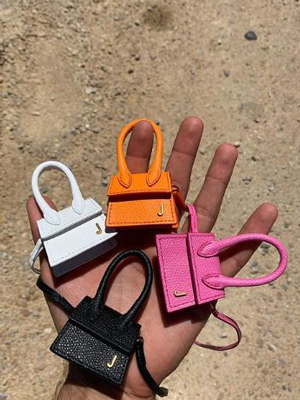
by Jaсquemus. (Photo: @Jacquemus)
Newcomers brought up by online influencer culture aside, handbags as trending items on their way to becoming iconic is not new. From Hermès’ Birkin bag to Chanel’s Boy purse, designers have used handy accessories for decades to differentiate themselves in the fashion market – with growing success. According to Statista’s 2024 forecast, the global handbag market will amount to USD 68.31 billion, with revenues set to grow by nearly 4 percent a year to 2028.
Such potential for profit and ascribed status have a downside: luxury handbags are vulnerable to counterfeiting. But there are various ways to protect the trademarks, as well as the design of a handbag. In fact, many established brands go to great lengths to safeguard their name and products. Handbags can easily become staple products that will be sold in more than one season. Ensuring legal protection via IP rights can transform them from a single item in a collection into an iconic piece that the brand’s designers can reinterpret over and over again.
Top ways to protect a designer bag from counterfeiting
A handbag can include several IP rights simultaneously. Take the bag Jeff Koons and Louis Vuitton created in 2017. The painting on the handbag would be protected by copyright, the brand logo and name by trademarks and the shape of the handbag by industrial design. And if a handbag is fabricated from an innovative material or process that the company developed, these can also be protected by a patent.
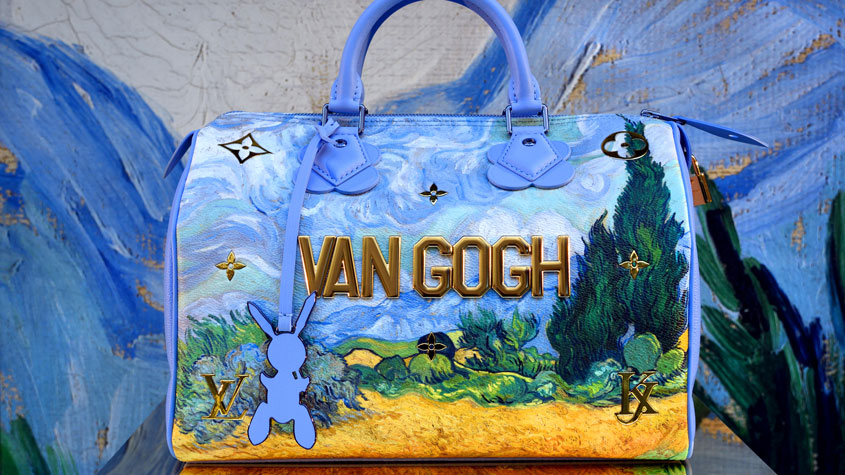
Placing large logos prominently on bags and garments is also in vogue. As previously reported in WIPO Magazine, this is a way for brands to appeal to Instagram-happy millennial and Gen Z consumers, who want to broadcast the brand they are wearing. It also gives brands a way to legally protect aspects of their garments and other utilitarian items that might not otherwise be protectable.
Trademarking a handbag
Trademarks are a form of IP protection commonly used in the fashion industry. They protect various symbols attached to a handbag, such as distinctive brand names, logos and images that indicate the source of the handbag. Fashion businesses rely heavily on trademarks because they can renew them indefinitely, under certain conditions, and their value increases over time.
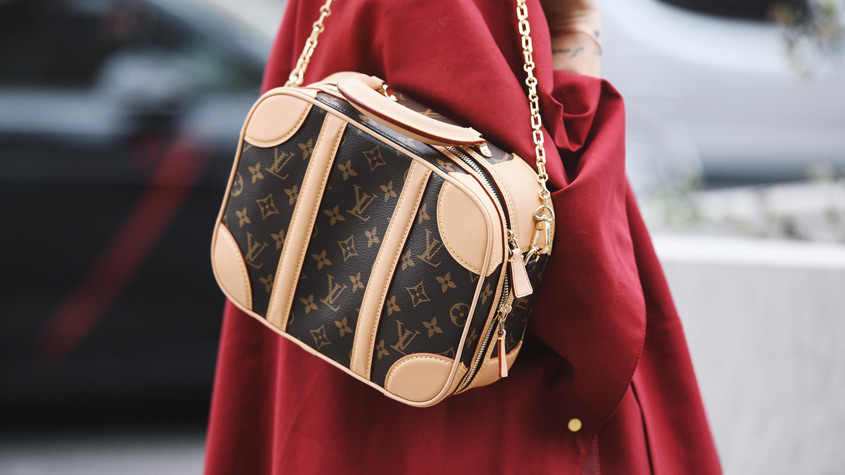
Louis Vuitton’s distinctive toile monogram
One of the strongest trademarks in the fashion industry is the Louis Vuitton logo. The company was founded in 1854 and obtained trademark protection for its “toile monogram” – the famous intertwined LV logo – as early as 1896. Today, Louis Vuitton is the world’s most valuable luxury brand, valued at USD 43 billion (exclusive of tangible assets) by Interbrand in 2023. Brand value of this magnitude requires huge investments, and the protection and enforcement afforded to trademarks can ensure that these investments are worthwhile. When applied to a simple product such as an umbrella, a T-shirt or even a surfboard, a trademark can help sell it at a higher price.
Louis Vuitton considers counterfeiting one of the biggest threats to a brand’s survival, with effects that go far beyond simply picking up a cheap bag on the street.
Because of its heritage, Louis Vuitton is known for taking a zero-tolerance approach to counterfeiting. Its publicly accessible brand protection policy states that preserving the creativity and the rights of designers, artists and fashion companies is “vital to their long-term survival.” Louis Vuitton further considers counterfeiting “one of the biggest threats” to this survival and adds that the effects “go far beyond buying a cheap bag on a street in a faraway city while on holiday.”
The rise of super fake handbags and the impact on consumers
Nevertheless, fake handbags are a common sight. They show that a brand has captured popular imagination, even among those consumers who cannot afford a designer item. It could even be argued that counterfeit products bring fashion labels more publicity, stimulating trends and increasing demand for the originals, as another contributor pointed out in his article on design law in Europe. Perhaps Gabrielle “Coco” Chanel was correct in her assertion that imitation is the highest form of flattery.
Imitation is the highest form of flattery.
Coco Chanel
At the same time, trademark infringement, particularly counterfeiting, can certainly confuse consumers and damage the designer’s reputation. This is the issue at the heart of many fashion disputes.
To secure registration of its trademark, the owner must first establish that the trademark is or has become distinctive. Then, to win a case claiming infringement, the trademark owner must prove that the alleged infringer’s mark is likely to “confuse” consumers about the source of the product.
Likelihood of confusion in Dooney and Bourke v. Louis Vuitton lawsuit
In 2003, Dooney & Bourke released a collection of handbags with colorful monograms. The company admitted having been inspired by the Louis Vuitton handbag collection designed by the artist Takashi Murakami. He created the “Multicolore” Monogram design in 2002, which LV promptly trademarked. The new line of bags in white or black and dressed in the LV logo in 33 colors became an instant hit. Louis Vuitton sold 70,000 bags and accessories in the first year, making it the “It bag” of the season.
A year later, Dooney & Bourke launched the It Bag collection, “inspired” by LV’s new look. Louis Vuitton promptly brought claims of trademark infringement, unfair competition, false designation of origin and trademark dilution. Even aside from the sheer number of claims, the court case and appeal that followed turned out to be a landmark ruling in the assessment of the likelihood of confusion in trademark infringement cases.
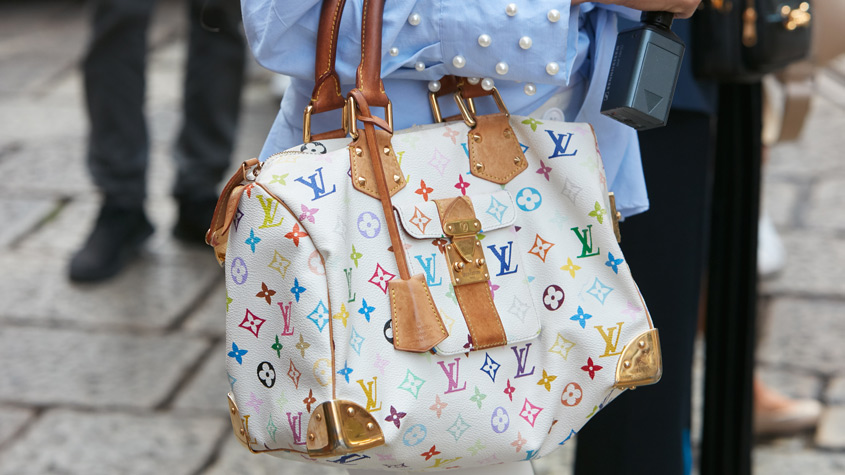
Louis Vuitton claimed that Dooney & Bourke infringed the LV trademark because consumers would likely be confused about the origin of the Dooney & Bourke handbag. The court ruled that Dooney & Bourke “copied” Louis Vuitton but held that it had not violated the French fashion giant’s IP rights.
The court asked if you’d know the difference if you saw someone carrying the bag in the street to establish the likelihood of confusion.
When considering the likelihood of confusion, the court found that the question should be assessed in a real-life context; in other words, if consumers would know the difference between two handbags if only one were spotted on the street. Previously, common practice was to judge two similar-looking handbags next to each other. The court rejected this, finding that it would encourage consumers to find more similarities between two handbags than they would when seeing either on its own in real life.
Likelihood of confusion aside, a trademark owner may also prevent third parties from “diluting” its trademark. Trademark dilution is understood to diminish the recognition value of a trademark or harm the reputation of a famous trademark by associating it with another less famous trademark but exceptions do apply.
In the case Louis Vuitton Malletier v. My Other Bag Inc., My Other Bag added an image of a Louis Vuitton handbag to an inexpensive tote bag. The court held that the LV trademarks were not diluted due to the exception of parody. In other words, the cheap tote bags could not possibly be confused with anything in the Louis Vuitton range.
Trademark dilution in Hermès International v. Rothschild lawsuit
The decision to use trademark dilution as a legal avenue to enforce IP rights shouldn’t be taken lightly, due to the burden of proof required. However, it is not impossible to achieve. For example, Hermès proved the dilution of its trademark in the famous US case Hermès International v. Rothschild. In 2022, Hermès sued Rothschild, alleging trademark dilution among other claims for the use by Rothschild of the Birkin trademark to name its products MetaBirkins, confusing the customers as to the origin of these products. In this case, the court found Rothschild liable for trademark dilution, even in the digital sphere.
Trade dress rights in the Birkin bag design
The Birkin bag created in 1984 is also protected under trade dress in the United States. This covers the overall “look” of a product, including its color, shape, size, texture, packaging, labeling and all other elements.
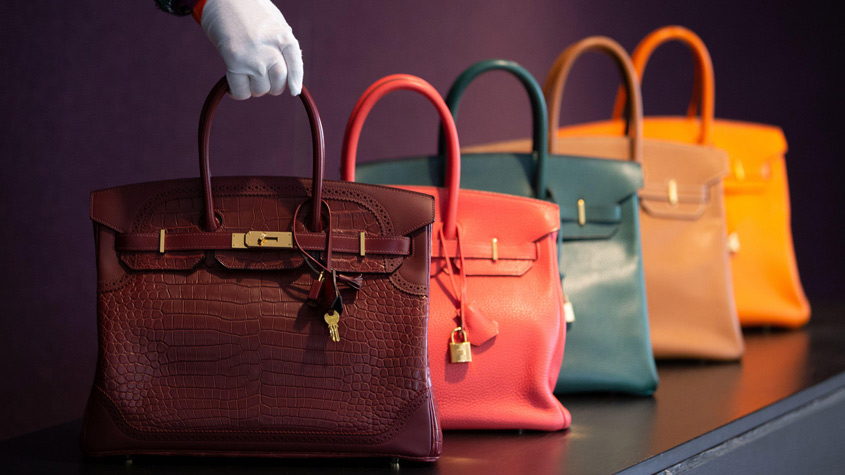
For a handbag to be protected as trade dress, it must be distinctive – and considered so by the public. Alternatively, it may have acquired distinctiveness through use, also called secondary meaning – but this can take years, as the brand must prove that the public associates the handbag with the company that produced it. In other words, a handbag or look must have become synonymous with the brand. Fashion items other than the Birkin that have attained such a status include the red sole of a Louboutin shoe, or the blue box holding jewelry bought at Tiffany & Co.
Copyrighting design elements of a handbag
A handbag can also be protected by copyright, but the scope of that protection is limited. Copyright law protects original works of authorship, which includes artistic works such as the design elements of a handbag. These elements must be original and creative, such as unique patterns, graphic designs, drawings, photographs and certain sculptural elements that might be part of the handbag.
However, the functional aspects of the handbag, such as its shape, utilitarian features and construction, are not protected by copyright. These aspects might be protected under other IP rights, which is why designers and manufacturers should use a combination of IP rights to safeguard their creations. The advantage of copyright is that it doesn’t require registration in many jurisdictions, and designers can plead their rights in court.
Patenting components of a handbag is an option but can take time
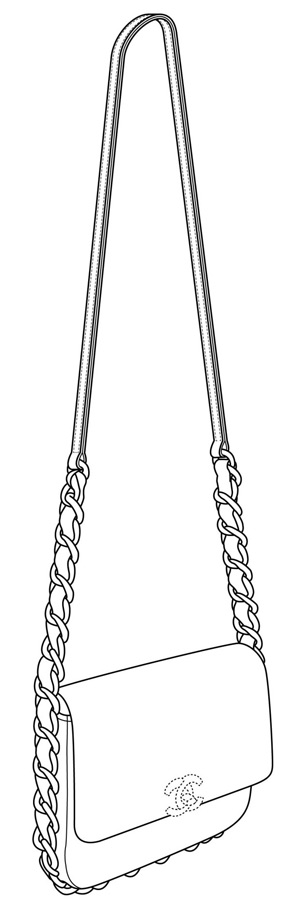
under WIPO’s Hague System
(International registration number DM/214801)
Hermès and Louis Vuitton have not only created iconic handbags but also have the means to sue their competitors – even in cases where the chances of success are anything but certain. For this reason, these brands often use patenting to protect their products and inventions.
Components may be patented if the product is new, useful and non-obvious to a person skilled in the art. For a handbag, for example, a patent may be sought for its new clasp device, or an innovative material from which it was made.
Again, Louis Vuitton is a good example. The company obtained its first patent in 1890 for its tumbler lock, a single-lock system with two spring buckles as a trunk enclosure, and it uses this lock even today. More recently, LV received a patent for the Keepall handbag with a built-in flexible OLED screen in 2020.
Protecting designer bags with industrial design rights
Industrial designs have also gained popularity among fashion companies looking to protect their handbags. Known as design patents in the US and some other jurisdictions, these IP rights offer strong protection of design elements. A handbag can be protected for its three-dimensional features, such as its shape, and for its two-dimensional features, such as its patterns, lines or color combinations.
This spares brands from having to acquire distinctiveness or prove confusion, which has led established brands like Hermes and Chanel as well as relative newcomers like Victoria Beckham to seek such IP protection.
You may establish consumer confusion in an unfair competition claim
While the above examples are undeniably classics and warrant such elaborate forms of protection, creating a distinct enough design can still invoke IP protection. Companies can make unfair competition claims to protect themselves from competitors that imitate the overall appearance, trade dress and other visible features of their products. To succeed in their claim, IP rights owners must prove that the shape or overall appearance of their product is competitively distinctive. They must also prove that the alleged copy creates confusion among customers or that the imitation damages their reputation.
In the famous case Issey Miyake v. Largu Co. Ltd, the Japanese designer won a legal battle over the now iconic Bao Bao handbags. The Tokyo District Court in 2019 found that Largu Co. Ltd violated Japan’s Unfair Competition Prevention Act and ordered the company to pay Issey Miyake nearly USD 700,000 in damages.
The court held that the bags sold by the Chinese company resembled Miyake’s Bao Bao handbag closely enough to create confusion among consumers. The court dismissed the difference in size and shape between the triangular elements. It also established that the Bao Bao handbag created in 2000 obtained popularity and reputation before Largu Go launched its handbags in 2016.
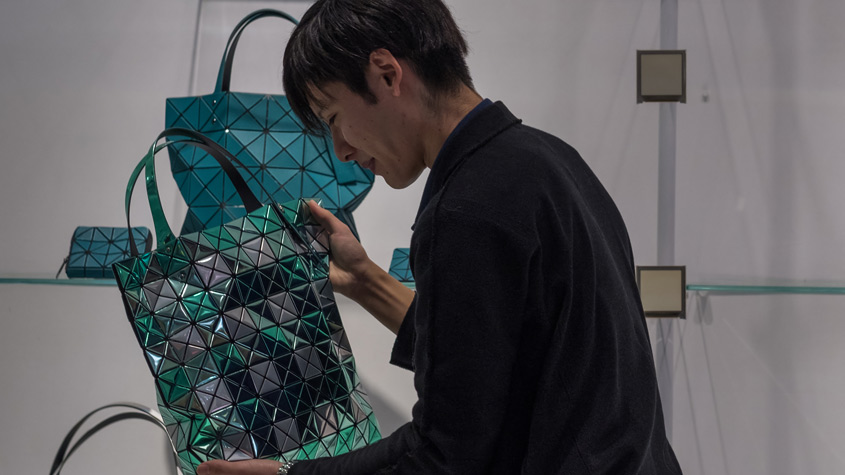
All of this goes to show that distinct design pays, often in the long term, even in the fast-moving fashion industry. Handbags will remain great sources of inspiration and profit for fashion businesses worldwide – but this also makes them subject to counterfeits that may confuse consumers. Designers need to know how to protect the handbags they create. These are staple pieces that can become iconic, not only in the eyes of the public but also in IP law.
When IP rights are enforced, companies and designers gain the right to produce and sell their products exclusively. IP is therefore fundamental in turning one season’s It bag into an enduring, iconic piece that can make a company’s name.
About the author:
Anca Ciurel is a Canadian attorney who has served fashion clients in a boutique IP law firm in Montréal. She also worked in the intellectual property departments of Louis Vuitton and Berluti in Paris. Ms. Ciurel currently examines the role of IP in the fashion industry and the future of fashion in the digital era in the Office of the Deputy Director General of the Copyright and Creative Industries Sector of WIPO.
To find out more about IP in the fashion industry, please consult WIPO’s recently published tool on the subject.
- Trademark protection can be obtained by filing an application for registration with the national/regional trademark office and paying the required fees. At the international level, you can apply for a trademark in each country in which you are seeking protection, or you can use WIPO’s Madrid System.
- Industrial design protection can be obtained by filing an application for registration with the national/regional IP office and paying the required fees. At the international level, you can apply for design protection in each country, or you can use WIPO’s Hague System.
- Patent protection can be obtained by filing an application for registration with the national/regional patent office and paying the required fees. At the international level, you can apply for a patent in each country in which you are seeking protection, or you can use WIPO’s PCT System.

